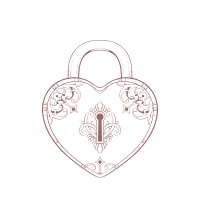
Exploring Mindfulness Meditation: A Step-by-Step Guide
Discover the art of mindfulness meditation with our easy-to-follow guide, designed to help you achieve mental clarity and inner peace.
article by Hina Kurosawa
Introduction to Mindfulness Meditation
Meditation has been a cornerstone in various cultures for centuries, offering a path to tranquility and enlightenment. Mindfulness meditation, in particular, emphasizes present-moment awareness, training the mind to focus on the here and now. Entering 2024, this ancient practice remains a salve for the ever-increasing pace of modern life. It's not just a spiritual endeavor but a scientifically supported technique for enhancing mental health, reducing stress, and improving overall well-being.

Preparing Your Mindfulness Space
To begin your practice, identify a peaceful spot. It could be anywhere—a corner of your bedroom, a dedicated meditation room, or a quiet space in nature. The key is to find a location where interruptions are unlikely. In our digital age, silence means not just a physical quietness but also distancing oneself from the constant pings from our gadgets. Ensure your meditation space allows a break from technology, adding to the serene atmosphere essential for successful mindfulness practice.

Adopting a Mindful Posture
Your posture is integral, as it's the foundation upon which your mindfulness will build. Sit comfortably, whether on a chair or a cushion, with a straight yet relaxed spine. Research has shown that an upright posture can facilitate a clearer flow of thoughts and deeper breathing. Place your hands gently on your lap or knees. Whether you choose a lotus position or simply sit with your feet flat on the floor, what matters is the comfort that allows concentration.

Initiating the Meditation Process
Begin the meditation by closing your eyes, focusing your mind on the rhythm of your breathing. This initiates the calming process. Notice the inhale and exhale, but do not try to control it. The objective is simple yet profound: to be aware of your breath as it is. As you settle in, your awareness of the external world will fade, and your journey inward will deepen, marking the true beginning of mindfulness meditation.

Embracing the Present with Gratitude
Anchor yourself in the now by paying attention to the sensations in your body. Feel the areas of tension and visualize breathing into them to release tightness. Embrace gratitude for the present moment. This can be incorporating feelings of thankfulness towards your breath, your body, or simply being alive. Gratitude enhances positive emotions and is known to improve mental health, making it a valuable component of contemporary mindfulness practices.
Navigating Distractions and Beyond
As the mind tends to wander, you may find yourself distracted by thoughts or noises. This is completely normal, even for seasoned practitioners. Instead of fighting these distractions, acknowledge their presence and gently guide your focus back to your breath. This non-judgmental return to the moment embodies the essence of mindfulness and builds your ability to maintain concentration amidst the distractions of our increasingly complex world.
Concluding Your Meditation Practice
To conclude, slowly bring your attention back to your surroundings. Open your eyes when you feel ready, without haste. Gently stretch if needed, and stand up gradually. Savor the tranquility and carry the peacefulness you cultivated into the rest of your day. With continued practice, each session can lead to greater awareness, compassion, and a more mindful approach to daily life.
Published: 1/18/2024
Modified: 1/18/2024
More predictions
Come back here soon to learn more about yourself and your future


Can Meditation Impact On Depression?
Meditation can be a powerful tool for mental health. Discover whether incorporating a meditation practice can alleviate depressive symptoms.


The Significance of Modern Meditation
Discover the crucial role meditation plays in fostering well-being, focus, and balance in today's fast-paced world.


The Origins of Meditation: Tracing Its Historical Roots
Discover the historical origins of meditation, its transformation through time, and its profound impact on various cultures around the world in this insightful article.